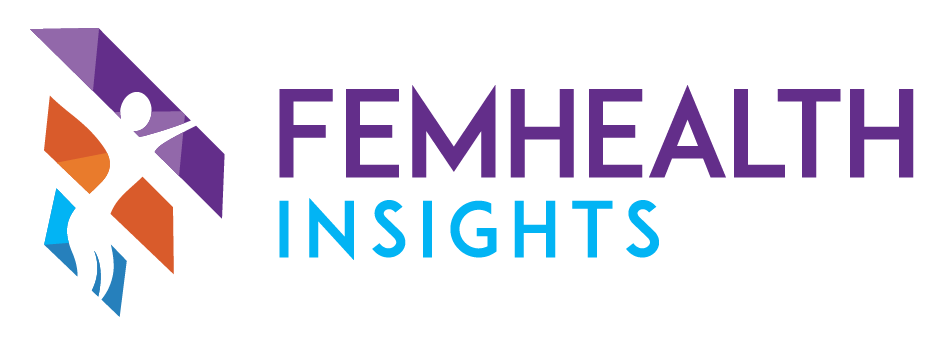Interconnected Wellness: How Sexual and Mental Health Shape Women's Overall Health
Written by Dr. Brittany Barreto, Founder & CEO, FemHealth Insights
In recent years, the discourse surrounding women's health has gained significant momentum, revealing critical insights into the multifaceted challenges women face in maintaining their mental, physical, and sexual well-being. A recent white paper by LevLane Advertising and Rosy Wellness, titled "The Women Are Not Alright," delves into these issues, highlighting the complex interplay between mental and sexual health and the systemic barriers that hinder comprehensive care for women.
Mental Health Tops Women’s Health Priorities
The white paper underscores the importance of mental health, with 53% of women aged 18 and older citing mental health-related issues as one of their top three health priorities or concerns. This focus on mental health reflects broader societal trends, where increased funding, reduced stigma, and greater availability of public resources have brought these issues to the forefront. Stress management (45%), sleep health (33%), and heart health (32%) also emerged as significant concerns among women.
Despite this increased awareness and the rise of telehealth, women continue to feel squeezed from all sides. Access to mental health and sexual health services has improved. Yet, women still struggle to prioritize their sexual health due to societal pressures, lack of resources, and limited opportunities for open discussions.
The Connection Between Mental and Sexual Health
The link between mental and sexual health is well-established, with the paper emphasizing that a healthy sex life plays a vital role in overall well-being. During sexual activity, the body produces physical and chemical reactions that contribute to positive mental health outcomes, such as the release of "happy hormones" like dopamine and serotonin.
Depression, anxiety, chronic stress, poor sleep, and other mental health issues have a direct impact on sexual health. According to the International Society for Sexual Medicine (ISSM), these mental health concerns can lead to low libido, difficulty becoming aroused, and low sexual satisfaction. Given that women are nearly twice as likely as men to be diagnosed with anxiety disorders, addressing these interconnected issues is crucial.
Frequency Matters
The survey conducted by Rosy Wellness highlights a clear correlation between sexual activity and overall health. Women who reported having sexual problems were 30% more likely to have poor health and 15% more likely to report low sex satisfaction. This suggests that increased sexual activity may contribute to better physical and mental health outcomes.
Low Sexual Desire and Satisfaction
The white paper reveals that 27% of women are unsatisfied with their sex lives. Low sexual desire (76%), sexual pain (22%), and a history of sexual trauma (14%) are the most common sexual problems cited by women, emphasizing the need for targeted interventions and support.
Barriers to Holistic Care
One of the report's critical findings is the systemic barriers that prevent holistic care for women. Even the most well-intentioned physicians struggle to address the whole woman in a healthcare system built around billing codes and 15-minute visits. The focus often remains on the acute issue that brought the patient to the office rather than exploring the interconnected aspects of their health.
The current reimbursement system does not incentivize comprehensive care that addresses both mental and sexual health. Reimbursement rates for women’s health visits and procedures continue to decline while documentation and screening requirements increase. This imbalance discourages physicians from offering the level of care women need.
The Need for Systemic Change
To address these challenges, systemic change is required. This includes incentivizing care for women’s sexual health through reimbursement and adequate training for physicians in these areas. Physicians need more time with their patients to engage in substantive conversations that go beyond addressing the singular reason for their visit.
Employing counselors and patient educators and leveraging telehealth platforms can help bridge the care gap. Telehealth offers the flexibility to access specialized care on demand and often at affordable costs, supporting traditional in-person care.
Education is another critical component. A structured educational program for healthcare providers can clarify the link between mental and sexual health, providing evidence-based guidelines to share with patients. Additionally, increasing investment in women’s health research and technology is essential. Despite the potential for significant advancements, women’s health receives only a fraction of the funding allocated to men’s health and other healthcare categories.
Conclusion
The findings of the LevLane and Rosy Wellness report, "The Women Are Not Alright," highlight the urgent need for increased awareness, advocacy, and investment in women’s health initiatives. Addressing the systemic barriers that prevent comprehensive care and recognizing the interconnectedness of mental and sexual health are vital steps toward improving the overall well-being of women across different age groups and backgrounds.
Investors, healthcare providers, and policymakers must prioritize women's health, recognizing it as an undervalued asset with significant potential for positive outcomes. By prioritizing mental well-being and sexual wellness together, we can take a giant step toward making women well. The path forward requires collective action and a commitment to creating a healthcare system that truly addresses the whole woman.
About the Author:
Dr. Brittany Barreto, Ph.D., is the Founder and Chief Innovation Officer at FemHealth Insights. Every day, Brittany dedicates her work to advancing women’s health innovation by equipping key stakeholders with data-driven insights and strategic advice on the FemHealth market. She is also host of the FemTech Focus Podcast - the number 1 femtech podcast globally.






